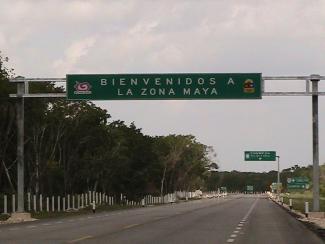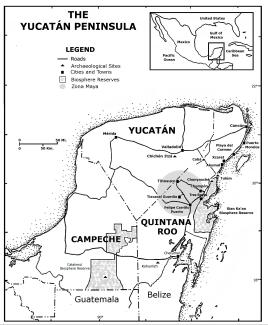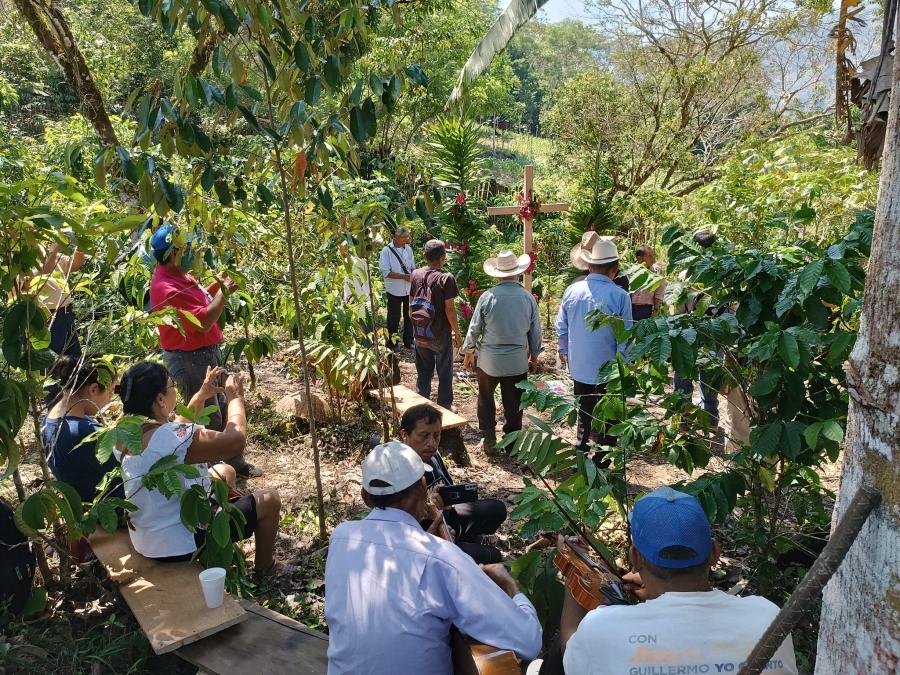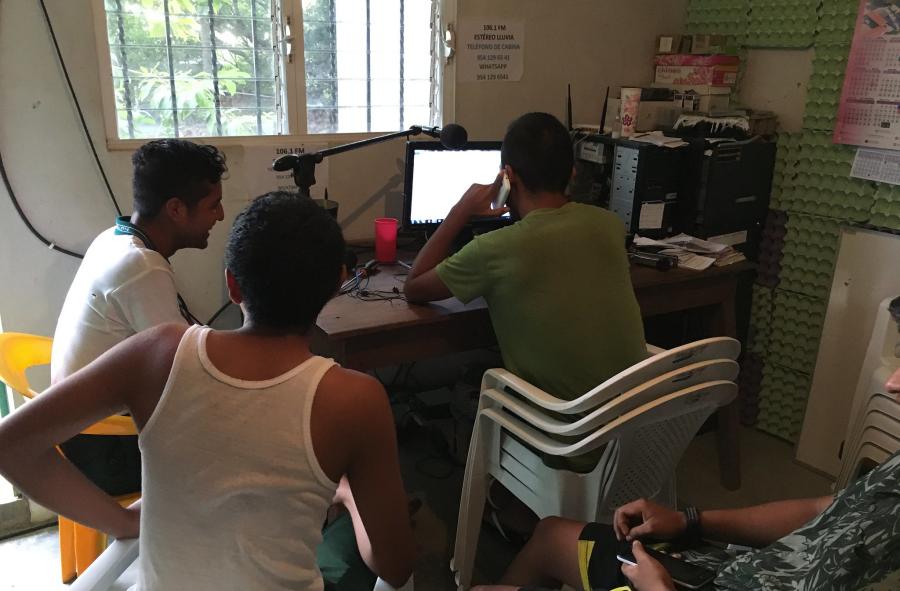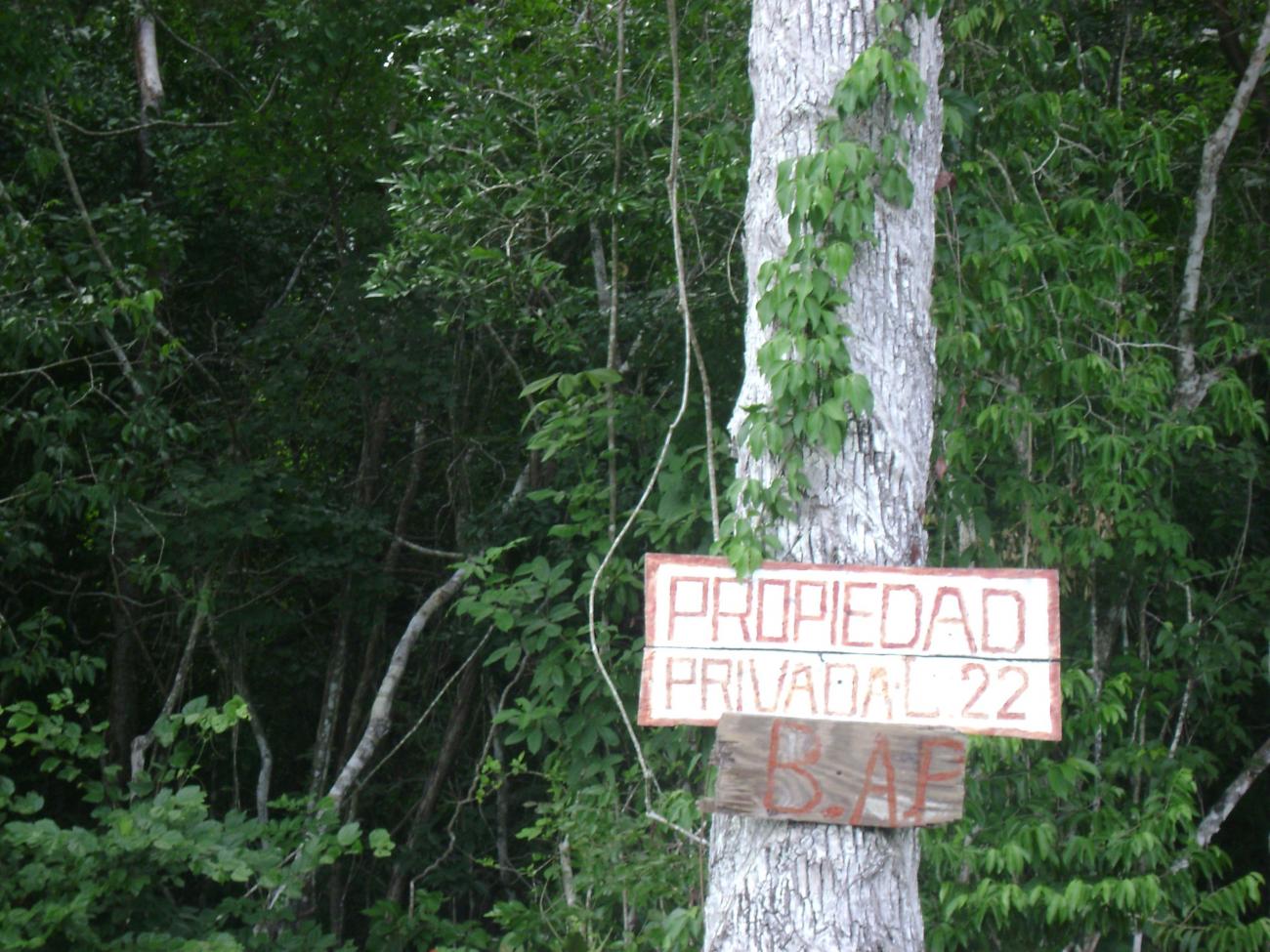
By José E. Martínez-Reyes
The Maya of central Quintana Roo and their environment have undergone enormous transformations in recent years. Pressures not only from tourism development, but also from land tenure changes and land speculation are beginning to create increased tensions within Mayan communities between people that want to continue the current system of communal land tenure (“ejido”) and those that feel pressure to sell their ejido rights to potentially offer land for development or for a recent biodiversity conservation scheme that is happening in the communities around the Sian Ka’an Biosphere Reserve.
This arrangement entails one of Mexico’s wealthiest individuals, Roberto Hernandez (a former Banamex bank owner), buying ejido rights from individuals residing in towns from Tulum and extending to the Sian Ka’an Biosphere Reserve in what is known as the Zona Maya (See map). Hernandez, along with his wife, has created a conservation trust called Fundación Claudia y Roberto Hernández (FCRH) with the intention of promoting ecosystem services (carbon capture credits). This is part of the programs and policies being supported by the United Nations Reducing Emissions from Deforestation and Forest Degradation (REDD+ program) for climate change mitigation of which Mexico has been a promoter through CONAFOR (National Comission of Forestry). Hernández’s buying ejido land for conservation and creating a conservation trust scheme is a de facto privatization of nature. I have been told by local Maya farmers that by using third party groups, Hernandez disingenuously convinces local rural folks to sell their land rights by promising thousands of pesos, taking advantage of their difficult economic situation. He also simultaneously lures agrarian government officials into approving such transactions. The press has also caught up to the practice and has reported several pieces in the local national newspapers (Por Esto Quintana Roo and La Jornada in Mexico City).
On top of the conservation restrictions to comply with REDD+, the Maya are facing increased periods of drought associated with climate change. These changes are putting enormous pressure on their resources, the forest, forest wildlife, their traditional agriculture, and make them more dependent on government subsidies. It also has the effect of promoting migration to try and find one of the relatively few jobs that the tourism industry provides. Facing this array of difficulties, local leaders, including the Mayan dignitaries associated with the Church of the Talking Cross, continue to question what prospects look like for their future generations. As a people that have endured profound struggles, including invasion and war, they continue to respond with an apocalyptic sentiment (that has nothing to do with the 2012 nonsense that the media perpetuates).
A History of Conflict
The central region of the state of Quintana Roo is known as the “Zona Maya.” It covers, loosely, the area south of Tulum and west of what is today the Sian Ka’an Biosphere Reserve. The majority of its inhabitants are Maya speakers, descendants of the rebel Cruzo’ob Mayas who fought against the Spanish-speaking Yucatecan elites during the Caste War of the Yucatan from 1847 to 1901. They were called cruzo’ob (although today they call themselves máasewal) for their association with the creation of a revitalization movement around a syncretic religion called the “cult of the talking cross” (Culto de la cruz parlante). Since then, and throughout most of the twentieth century, the east-central part of Quintana Roo has been characterized by outsiders as a region of Maya resistance.
The máasewal had a reputation of being fierce warriors that kept Mexican capitalist exploration and extraction companies away for many decades. They did permit the extraction of timber to the British from Belize which provided the necessary weapons and supplies to pay for the war effort. They also prevented many archaeologists from conducting research, including the famous Sylvaneous Morley and others that tried to conduct studies in the famous site of Tulum. Morley arrived in 1917 to conduct research and was received by a platoon of armed máasewalo’ob. In 1901, after the arrival of the Mexican army in the capital Chan Santa Cruz (Noh Kaj Santa Cruz Balam Nah for the Mayas), a pacification campaign began which included the establishment of Spanish language schools for Maya children. This was followed by a boom in the chicle (gum) tree industry that in effect opened the Maya Zone to forest exploitation by outsiders. The results of the Mexican Revolution began to be felt in the region after 1934 when president Cárdenas implemented the agrarian reform in Quintana Roo. New ejidos continued to be organized in the state throughout the 1950’s. This had a mixed reaction among the population because unlike a great number of places in Mexico where issues of land tenure were a major problem and the root of inequality, the máasewal already had communal access to land and were not bound to ejidos, which later became the norm. Years later, new challenges would emerge that would test the Maya, such as the creation of Cancun and the tourism industry.
The Tourist and Biodiversity Conservation Panaceas
In the 1970’s, Mexico promoted tourism as a tool for economic growth, particularly in Quintana Roo. The creation of Cancun spearheaded this growth. Today, Quintana Roo is one of the fastest growing states in Mexico, economically and demographically. The population doubled during the period from 1990 to 2000, due to migration from other Mexican states. This massive tourism industry has profoundly transformed the ninety kilometers of coast between Cancun and Tulum by creating new tourist spaces along virtually every beach. The coastal area is referred to as the ‘Riviera Maya’ by the tourism industry for promotional purposes. Several kinds of hotels have been built, from mega resorts to small scale ‘eco hotels’.
Tourism has had enormous repercussions on the máasewal communities of the Zona Maya. Many laborers, primarily in the construction and service industries who were attracted to jobs in the tourist towns, began the journey north. Back in their respective communities, farmers began to abandon their milpas (cornfields), which prompted changes in the quality of their nutrition and on their relationship with the environment. At the same time that these transformations were taking place, biodiversity conservation began to significantly alter the landscape, especially after the creation of the Sian Ka’an Biosphere Reserve in 1986. In principle, nature reserves are a positive response to the rapid decline of biodiversity by protecting areas, flora, and fauna that are deemed important as extractive capitalism continues to expand globally.
The problem is not that Indigenous groups are completely excluded, but how they are included in the process. Groups that have their ejido lands on the surrounding areas of the biosphere reserve have been pressured and/or convinced to participate in ‘alternative development projects’. NGOs were able to secure funds to promote such projects with the intention of generating alternative sources of income for local populations by using forest resources under the idea of ‘sustainable use’ within the parameters of UNESCO definitions of sustainable use of the buffer zones of the reserve. Examples of such projects in the last two decades range from organic agriculture, raising parrots for the pet market, ecotourism trails, rustic furniture from specific small underbrush trees, and arts and crafts for the tourist market. One major problem with this endeavor was that once funding for such projects ceased, involvement of the communities declined. Communities began to feel jaded because development projects never took off and they never saw the benefits for the time and effort invested in those initiatives. The real intention of such projects was to see if these communities could rely more on such ‘alternative development’ and less so on their traditional shifting agriculture that requires burning, and which is seen as a threat to forest managers and environmentalists.
Climate Change or Cultural Decline?
Regardless of the alternative development projects, migration to tourist towns, or the plain apathy that some of the younger generation has toward working on the milpa, the máasewal continue to grow their food. In recent years they have seen their harvest declining. Similar to other Indigenous groups that are dependent on natural resources for their livelihood, the máasewal experience firsthand the changes that take place in their environment. They are very perceptive of variation in the climate; particularly, they pay a lot of attention to rain. Agriculture in the Yucatan peninsula has always been difficult and vulnerable because of its physical geography, as there are not many superficial bodies of water, like rivers. The máasewal mostly get their water from sinkholes (cenotes, ts’onot) and wells.
One of the biggest problems to arise every time the topic of the milpa is raised is the declining production output of corn. “It doesn’t produce as before. A long time ago, between one and three hectares would last all year; now we plant five or more and it doesn’t produce enough for the whole year,” says Josué Ek Balam, one of the Mayan leaders of the Santa Cruz church. This is not a new phenomenon for the Maya. Working in the Zona Maya in the late 70’s, anthropologist Paul Sullivan documented a decline in production. In the 1990’s, Ueli Hosttetler observed similar patterns. One of the things the community has noticed more recently is the decline of rain and the size of forest canopy seems smaller that before. The idea of more work effort and lower yielding corn particularly discourages younger generations, who see that it becomes increasingly difficult to eek out a living in agriculture, even if combined with other productive activities.
Although living in the forest is never easy, whether in the last century or in the 21st, most community members attribute the aforementioned fluctuations to climate change. In addition to the lack of rain, Ek Balam tells me that these changes can be noted in the character of the soils and in the trees. In another community, I had the opportunity to walk in the forest with Xaká Canul who, in addition to farming, is also an apiculturist. Once we got to his beehives to provide water, he explained how the bees are producing less and dying faster than before. He also attributes this to climate change.
Although the causal argument for climate change is very commonly heard these days, there is also another explanation for the profound changes. This one was prophesized by the máasewal elders. “Our grandparents were sages,” says Pedro Canul. “I remember when I was a little boy, my grandmother telling me that the huaches [a term used for white foreigners] were going to build a four lane road and that would be the beginning of the end of the world.” He said this as the road between the towns of Tulum and Felipe Carrillo Puerto was being expanded to four lanes in 2009 (see image 1). Massive development has not reached the region yet, but with the expansion of the Tulum-Felipe Carrillo Puerto highway from two to four lanes, it opened the gates for privatizing ejido land. Some of it has been parceled out and one begins to see the surfacing of ‘propiedad privada’ signs along the highways (See image 2).
Anthropologists that have studied the region, most notably the late Alfonso Villa Rojas and Paul Sullivan, have described the apocalyptic nature of the máasewal prophecies. One day, while doing fieldwork in the region in 2002, the community I was living in woke up to the news that one of them had encountered a tree that had the shape of two hands, in a praying position, pointing down. This was seen as a sign—similar to the hands of the Descending God of the Tulum ruins—that marks the return of a Mayan deity but also of Jesus, who, some believe, will oversee the return of máasewal rule in the region. Various religious dignitaries rushed to the site. There was an improvised altar built next to the tree and a ceremony known as ‘primicia’ took place (See image 3 below).
Elder leaders see outside influences as the cause of many problems. “People are more divided. They used to come more often to the prayers of the [traditional Talking Cross] church. Today, not as much,” remarked one of the Mayan dignitaries in charge of the traditional church. “Now there is too much religious freedom. There are five different [protestant] churches in my town of Señor, and they are dividing the community. Before, all communities of the Zona Maya were one church [Cruz parlante],” he further lamented. They also pointed out the negative consequences of the selling of ejido rights, which is, in effect, privatization. This, they confided to me, “is a signal of the end… don’t know if today, tomorrow, or in ten years, but, nevertheless, the end. Only god knows when that will be. Only god will be able to solve this problem. The day will come and he will decide what to do with us. It won’t be today but it will happen.”
Climate Change Mitigation Schemes
The concerns of Maya leaders are coming to fruition in the Ejido Tres Reyes. One person representing ex-banker Roberto Hernández bought eight ejido rights. I met him in an ejido meeting in Tres Reyes and he confirmed that he worked for Hernandez. Each ejido member in Tres Reyes has access to approximately 400 hectares of land. While it is a large amount of land, most of the ejido is forest cover, and the traditional agricultural practice amounts to only a few hectares in production each year. However, if one person has eight ejido rights, he will have right of use to approximately 3,200 hectares. As mentioned above, the intention is to accumulate land and pronounce that it is all protected forest so as to take advantage of the economic programs for ecosystem services that the government is running through CONAFOR, the government agency in charge of coordinating such programs in Mexico. If this trend continues, Hernández’s foundation would benefit while disenfranchising the Maya as well as going against the intent of REDD+, who declare on their website: “REDD+ will require the full engagement and respect for the rights of Indigenous Peoples and other forest-dependent communities.”
To make matters worse, in addition to Tres Reyes, Hernández has already bought other ejido lands. The local press identified Hernández as using family member names to buy what amounts to the majority of the ejido rights in the Pino Suarez ejido, just south of Tulum. The concern that Mayan leaders have is that land that is supposed to be for use by Mayan farmers, “land that God has given us,” as they attest, will soon disappear. Privatizing ejido land has been made much easier because of the North American Free Trade Agreement (NAFTA) and the changes to the Agrarian Reform law of the Mexican constitution (Article 27). Moreover, what Hernandez has done is taken advantage of the dire economic situation (in particular, the extreme difficulty of growing enough food in their cornfields) and enticed Mayan farmers with thousands of pesos, which they saw as a panacea that could take care of their immediate needs. However, by selling their ejido rights, they essentially give away their rights to land for a relatively small price. In the ejido of Tres Reyes, the prices paid varied. The first person sold his for 70,000 pesos (approximately $6,000 USD), then purchased a pickup truck and spent the rest of the money rapidly. Others requested more money, seeing that the buyer was willing to pay more. Nonetheless, they now find themselves in a position in which they have no land to work.
From talking to people in this region, it became clear that a substantial number of them of them had experienced working in the tourist industry at some point in their lives. When there were cutbacks due to low seasons and when they couldn’t find other jobs, they would come back to the area. They knew that having land was a reserve strategy. If other options failed, having access to land became their safety net. If privatization continues to become more prevalent, it will lead to further marginalization for the Masewalo’ob.
One positive aspect from early speculation is that some community members saw how others quickly spent what they viewed as a lot of money. It led them to see the writing on the wall, so to speak. “I will never give up my rights. My tatich [grandfather] said that he who gives up his land gives up his future. This is land for my grandchildren. Why would you give up the land of your grandchildren? I will not give up my land for any money in the world.” Today, life for the máasewal will not be the same. The path to change is never ending. For some that have migrated and returned, life in the forest, albeit hard, continues to be a source of pride and for continuing traditions connected to their territory as opposed to the difficult life that Western modernity provides. Indigenous advocacy groups should condemn the scheme of permitting the privatization of ejido rights, which has the potential to be not only detrimental to the future of the Zona Maya but also makes a mockery of REDD+’s mission of respecting the rights of Indigenous populations.
--Jose E. Martinez-Reyes, PhD is assistant professor of anthropology, at the College of Liberal Arts at the University of Massachusetts Boston.
